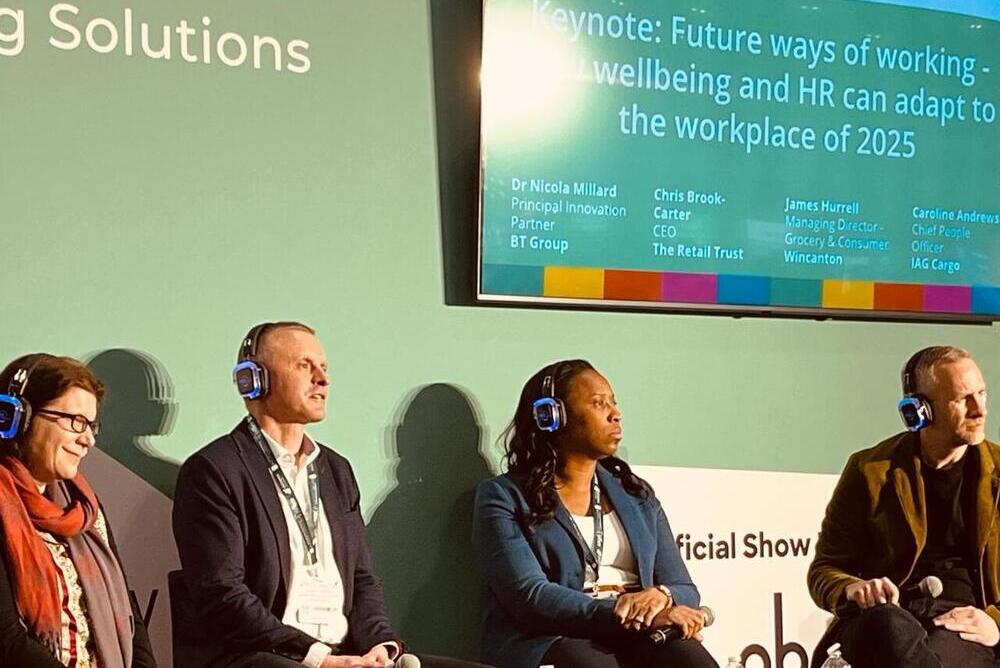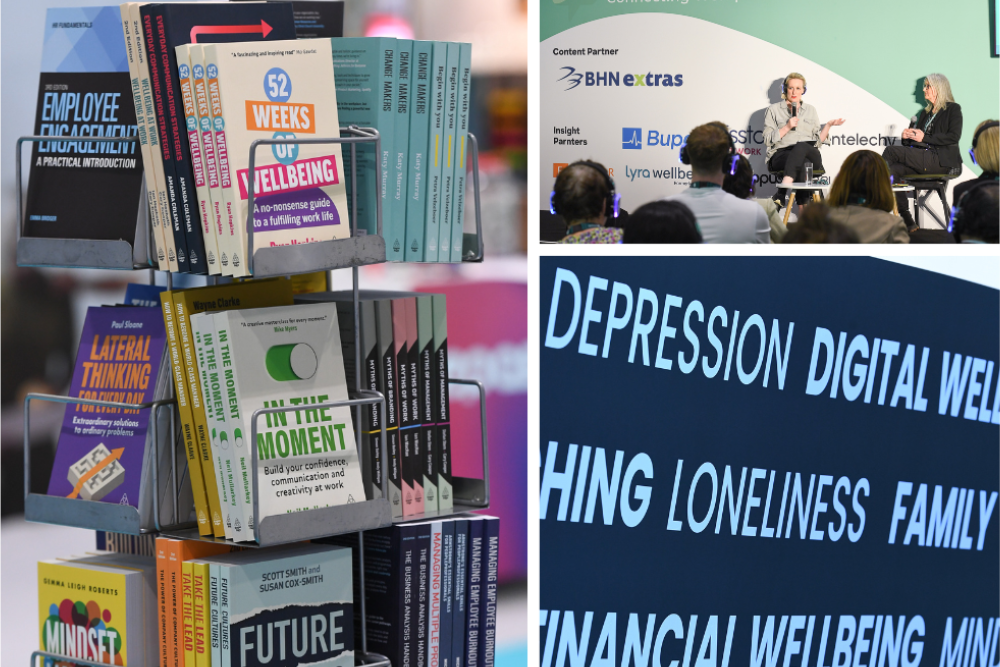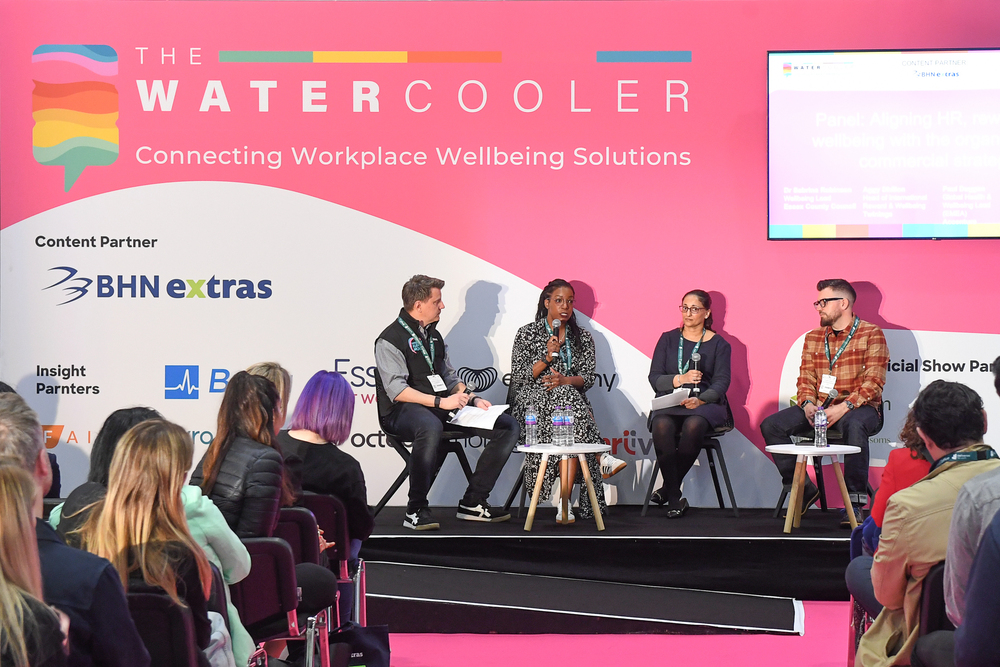In today’s rapidly evolving work environments, nurturing a sense of belonging, support, and camaraderie among employees is pivotal for individual wellbeing and overall organisational success.
An innovative strategy gaining traction is the concept of ‘Lived Experience Peer Support’ communities, presenting a transformative solution to bolster employee engagement in wellbeing programmes. These non-hierarchical networks provide a dedicated space for employees to forge connections, share challenges and successes, and establish a supportive ecosystem tailored to enhancing wellbeing.
In this article, we delve into the compelling value of lived-experience peer support, exploring the mutual and reciprocal benefits it brings, and present practical advice for employers striving to implement these communities within their wellbeing programmes.
The essence of lived-experience peer support
Lived Experience Peer Support revolves around the premise that individuals grappling with similar challenges can offer unparalleled empathy, understanding, and guidance to one another. These communities thrive on their non-hierarchical nature, where everyone takes on roles of both provider and recipient of support. Within this inclusive environment, employees are empowered to open up about their experiences, knowing they are among colleagues who genuinely comprehend their struggles.
The value of non-hierarchical, Mutual Support
1. Enhanced Wellbeing and Resilience: Lived-experience peer support bolsters employee wellbeing by establishing spaces where individuals can candidly share their stories without the fear of judgment. This nurturing environment fosters resilience, enabling members to learn insights from one another’s coping strategies and adapt them to their unique challenges.
2. Strengthened Sense of Belonging: Employees who may feel isolated or overlooked find a sense of belonging within these communities. They realise they are not alone in their experiences and that their voices hold significance, greatly amplifying morale and engagement.
3. Skills Development and Learning: The diverse array of backgrounds and experiences within these communities provides opportunities for learning and growth. Members can exchange valuable insights, strategies, and knowledge that can significantly enhance their personal and professional lives.
Examples of lived-experience peer support communities
1. ADHD Peer Support Community: Picture an employee named Sarah, recently diagnosed with ADHD. She discovers real understanding in an ADHD Peer Support Community at her workplace. Through meaningful discussions and shared experiences, Sarah gains profound insights into effectively managing her condition within the work context. This community empowers her with actionable strategies while uplifting her spirits by making her feel heard and supported.
2. Menopause Peer Support Community: Consider Jane, a senior executive navigating the challenges of menopause. Within a Menopause Peer Support Community, she connects with other women encountering similar experiences. The community evolves into a space where Jane can openly address menopause related concerns, gather practical advice on symptom management, and receive heartfelt encouragement from her peers. This network assists Jane in maintaining her productivity and engagement during this transformative phase of her life.
How are peer-support communities (PSCs) different from employee resource groups (ERGs)?
While both Peer Support Communities (PSCs) and Employee Resource Groups (ERGs) contribute to employee wellbeing and organisational success, PSCs offer a unique advantage by fostering non-hierarchical, inclusive spaces for employees with shared experiences or interests. Thus cultivating mutual support and personal growth.
PSCs do not segregate employees based on specific characteristics, cultivating a more diverse and integrated environment where individuals from various backgrounds can connect, learn, and empathise together. ERGs, on the other hand, are formal groups aligned with diversity and inclusion goals, often led by designated members and focusing on specific identity-related topics, contributing to a broader understanding and awareness within the organisation.
Practical tips for employers
1. Identify Relevant Topics: Survey your workforce to comprehend the challenges and interests they face. Topics may encompass work-related stress or diversity and inclusion issues. This ensures that the peer support communities address issues that genuinely resonate with your employees.
2. Promote Inclusivity and Diversity: Guarantee that the peer support communities are inclusive and diverse. Encourage participation from employees of all backgrounds, experiences, and job roles. This diversity enriches discussions and broadens the spectrum of perspectives shared.
3. Create Safe Spaces: Establish ground rules emphasising confidentiality, respect, and empathy within the communities. Members should feel secure in sharing their experiences without apprehension.
4. Nurture Community Leaders: Identify individuals who have a passion for fostering connections and supporting others. Provide training on active listening, conflict resolution, and leadership skills. These leaders will steer discussions and uphold a positive atmosphere.
5. Provide Resources: Equip the communities with resources such as articles, webinars, and workshops to aid members in addressing their challenges. Allocating budgets for events or initiatives can further amplify the communities’ impact.
6. Celebrate and Recognise: Acknowledge the contributions of community leaders and spotlight success stories. This recognition not only motivates leaders but also underscores the broader organisation’s appreciation of these communities.
7. Embed at the Highest Level: Consider embedding your PSC at the highest level through executive endorsement and engagement. Invite top-level leaders to actively participate and champion the PSC’s initiatives, underscoring the organisation’s commitment to fostering a culture of mutual support and inclusivity. This conveys that the PSC holds value and support, encouraging more extensive participation and ensuring alignment with the company’s overarching mission and values.
Conclusion
Lived-experience peer support communities embody the essence of mutual aid and understanding in the workplace. By creating spaces where employees can share their challenges, triumphs, and knowledge, organisations foster a culture of empathy, support, and growth. Embracing the non-hierarchical, inclusive nature of these communities can lead to enhanced wellbeing, heightened engagement, and a more interconnected workforce.
Employers who prioritise the integration of lived experience peer support will reap the benefits of a resilient, empowered, and united team. For organisations with existing ERGs, integrating PSCs alongside them offers a potent strategy to address the pervasive issue of lack of active employee engagement in wellness programmes. This dual-pronged approach ensures a diverse range of avenues for connection and support, contributing to a thriving and harmonious work environment.















